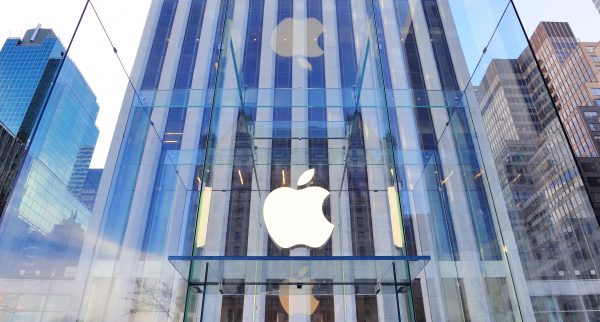The first online edition of the Digital Insurance Agenda, replacing DIA Amsterdam 2020, was a 5-day TV-show broadcast, programmed with keynote speakers and InsurTech pitches during the afternoon. For sure, it saved us travel costs, but we missed the community and network feeling… Nevertheless, it gave a good impression of the status of the digital transformation that the insurance industry is facing now in Europe. What were our major takeaways?
Open mindset and balance
December 2020 – The pandemic was a wake-up call for all incumbents. Digital transformation is accelerating. “The traditional models are under stress, now everything is 24/7. Having a digital sales channel is not a qualifier anymore”, said Marguerite Soeteman-Reijnen from Aon. But the speed of change has often a different pace at insurers, and now it stokes us the most: it’s not about technology choices, but it has all to do with cultural change.
Take for example Allianz, Iván de la Sota explained that their mindset is exemplary according to the philosophy that “marginal changes bring marginal results.” They started a 4-pillar business transformation program, combining core system transformation with innovation inside out and inside in. All this is driven by multidisciplinary teams, introducing a new company culture to embrace change and keep mindset open. Allianz has understood that complexity doesn’t need automation, but complexity needs to be simplified. Their response is a reduced and streamlined clear product offering.
It takes courage to lead the company to an uncertain future. All the above doesn’t happen overnight, and you’ll still be confronted with a desire for profitability on the short-term. For sure, it helps when you can count on change managers, specialised in digital transformation. They can help you to let the change culture trickle down from the management board and out onto the whole organisation for the needed ‘yes, we can’ mentality. And as the IT department is often bottle-necked by packed roadmaps, you need to balance internal and external IT providers so that digital transformation can fully take place. InsurTechs, of which quite a few presented themselves during DIA, can provide you with innovative products, but you still need a platform builder to ‘glue’ this point-solutions on top of your internal systems for best customer usage, operational efficiency and data exchange.
What are the innovations that DIA Prime Time brought to our attention and can inspire you for your future roadmap?
The new gig economy
How can you remain relevant as insurer for the Millennials? According to Uber, there were 3 million earners from the driver and delivery platforms in 2019, representing 48% of Millennials. They are not only looking for flexible work, but they also want flexible solutions: stability (income protection) and access to benefits (like life protection and medical insurance). Axa already managed to integrate a driver insurance into the Uber platform with an easy-to-use underwriting flow and pay-out request when a driver is sick and unable to work. A partnership with such a platform can lead to new insurance products and business models. A key message from DIA: “Insurance is the oil that makes the ecosystems work!”
Unlocking the value of telematics
The pandemic has an impact on all kinds of insurance but especially on personal motor insurance: we’re not using the car as much anymore as we were before. We don’t have to commute as often, travel is restricted. So, as we’re not using fulltime, we don’t want to have insurance fulltime, leading to an increase in usage based, telematics-based car insurance. Unipol in Italy was one of the first insurers installing a black box in the car of its customers. Their roll-out was substantial: they installed 90.000 black boxes in one month.
Initially, the offer of a 20% reduction of the vehicle premium was a pure marketing stunt, as they had no data yet to rely upon. But now, Unipol has become a genuine data science company, having the best mobility data in the market and even selling these insights to the government and other stakeholders in the Italian mobility ecosystem.
Swiss Re, the world’s most prominent reinsurer, has developed their ADAS (Advanced Driver Assistance Systems) risk score model. Its methodology is based on claims data analysis, vehicle testing and simulations. It already covers 95% of vehicle manufacturers globally and provides an accurate and forward-looking assessment of the insured risk. By using this granular data, this new risk assessment can be easily reflected in motor insurance tariffs.
Discovering new business models
Another trend that is persisting and finding its way to the customer is embedded insurance. By partnering with ecosystem players or platforms, insurers will find new distribution channels. This was the key theme at DIA 2020, and whilst there were many interesting pitches, smart travel insurance, offered by Lamie Direct piqued our interest following their partnership with the telecom sector.
This gives the huge advantage that the telecom provider knows exactly when a customer sets foot abroad, connecting their devices to the local network. This automatically triggers the activation of travel insurance. When returning home, the customer receives the invoice only for the days spent abroad.
Lamie Direct also presented a demo of insurance for shared flats on a co-living platform or a camping weather insurance embedded in the camping’s reservation flow. “This co-creation of insurance products will transform the existing ecosystems and lead to new business models”, expressed Lamie Direct.
Closer to the customer
The past year was also a time of great uncertainty. Economic devastation, disinformation and deglobalisation, polarisation, individualisation made that nothing seems as we were used to. As a result, customers started looking for more safety, reliability and transparency.
For insurers this means that getting more insight in the customer and what drives the customer is more important than ever. Technology allows all parties involved in insurance to do so. With wearables to get real time health analytics or using aerial photos go get exact property intelligence. SCOR Global Life mentioned that 41% more people are willing to share personal data from wearables and other connected devices. And over the past year, there was an 25% increase of health app usage.
Where seamless and effortless seem to be important drivers for digitalisation, we also learned during DIA that, for us, as humans, apparently there is a reason for friction and a reason for effort. Behavioural economics tells us that we need some friction to be able to process our decision, evaluate our choices (‘pain of paying’) and we need some effort to value what is being offered. In insurance, customers might never get to experience the consequences of buying the insurance while at the same time, as humans, we are over-confident (I ‘m a better than average driver). Then why should I get insured, why would I pay the premium, why would I make the effort?
Being able to get close to the customer, understand what drives the customer (customer centricity combined with data skills), would allow insurers to make more specific what the customer gets out of the relation with the insurer (prevention, protection), in order to make it more specific, more personal and more visible. Adding value to insurance is making it more relevant in these strange times!
Eager to hear more of our insights from DIA 2020 and the key trends or InsurTechs to watch in 2021? Perhaps you want to know how The Glue or ::projective can help you build your very own platform model or business transformation? Reach out now for a virtual coffee and a catch up!


